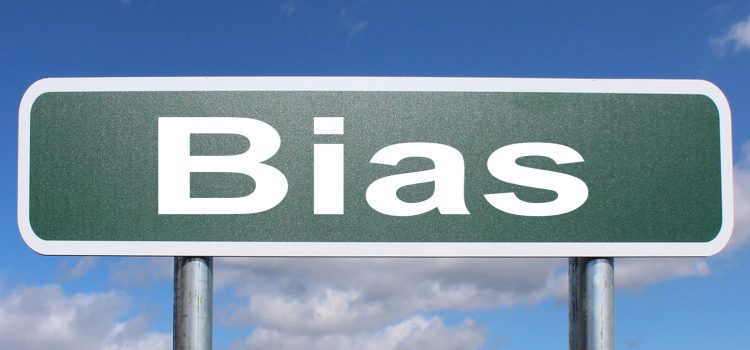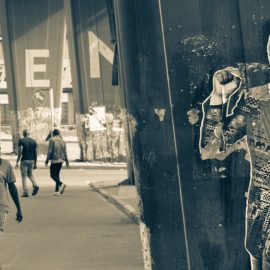

This article is an excerpt from the Shortform book guide to "Poor Charlie's Almanack" by Charles T. Munger. Shortform has the world's best summaries and analyses of books you should be reading.
Like this article? Sign up for a free trial here .
What is Charlie Munger’s lollapalooza effect? How do you know when this phenomenon is influencing your actions?
The lollapalooza effect is triggered when more than one of the cognitive biases work together to influence your behavior. The cognitive biases reinforce each other, often leading to extreme consequences. You can recognize the phenomenon when you see extreme behaviors in individuals or a group.
Read on to learn more about the impact of the lollapalooza effect.
The Lollapalooza Effect
The Lollapalooza effect, the 25th tendency on Munger’s list, is a kind of “super-tendency”—it involves the confluence of multiple tendencies that reinforce each other and lead to extreme consequences. Other terms for the Lollapalooza effect might include “synergy” and “emergent effects.”
As we’ll see below, an otherwise normal person can become a cult devotee through a combination of doubt-avoidance, stress influence, liking tendency, and a dozen other biases.
Unlike the 24 other cognitive biases, the lollapalooza effect isn’t a well-characterized tendency in psychology. Munger argues this is because multiple biases are hard to replicate in the lab, and psychologists simplify their research to yield replicable, isolated studies. Yet it seems like common sense that different biases could reinforce each other and be acting in the same situation simultaneously. This is yet another example of how contrarian thinking can be more correct than what an entire body of research has suggested.
Munger argues that anytime you see extreme behaviors on an individual or social level, the lollapalooza effect might be at work. This can include cults, the Milgram experiment (both of which we’ll explore further), the rise of Hitler, and stock market booms and busts.
Munger doesn’t suggest an antidote to lollapaloozas, but one approach might be to identify the tendencies at work, rank-order them by strength of influence, then tackle each tendency individually to weaken the mutual reinforcement of the tendencies.
Analyses of the Lollapalooza Effect
In discussing the lollapalooza tendency, Munger repeatedly mentions two examples of extreme behaviors: how cults work, and the Milgram shocking experiment. Following the spirit of his thinking, we’ll walk one by one through the checklist of 25 cognitive biases to see which ones contribute to these behaviors.
How Cults Work
Let’s walk through how an ordinary person becomes drawn to a cult and over time becomes an unrecognizable cult devotee. Nearly all of Munger’s 25 biases contribute:
- Doubt-avoidance: Cults often give answers to some of life’s most difficult existential questions. Potential members may be more vulnerable if they’ve lost direction in life and feel doubt about aspects of their life, and cults look like an attractive way to assuage their doubt.
- Stress-influence: Potential members may be in stressful situations before joining, such as financial debt or toxic relationships, which hastens their decision making.
- Liking/loving, influence-from-mere-association: The cult leader and cult recruiters can be charismatic, attractive, and likable, and thus cast a positive halo on the entire cult. Generally, cult members may seem like good people.
- Reciprocation: Recruiters may give a small token gift, such as Hare Krishna’s famous tactic of giving flowers to strangers. In return, they expect a donation or ask the recipient to listen to their sales pitch.
- Reason respective tendency: The potential member hears many justifiable reasons to join the cult. Regardless of whether they’re rational reasons, the existence of reasons can be convincing, especially for a stressed person doubting her life. Cult practices are then justified to newcomers.
- Social proof: Witnessing many cult members who seem generally happy and positive makes a newcomer think, “they can’t all be crazy.” Seeing all the cult members engage in cult practices like leader worship and communal living lowers the barrier to starting the practices herself.
- Excessive self-regard: Once a new member starts being folded into the cult, self-regard makes her think, “I’m a pretty smart person, and if this cult were crazy or terrible, I’d probably be able to tell. Therefore, it’s more likely this group really is valid.”
- Inconsistency avoidance: On initiation, cults often ask for a severance of ties with the normal world, requesting that new members sell their homes, donate their assets, and cut ties with their family and friends. This is a huge sunk cost that makes leaving the cult more difficult, practically and socially (it’d be embarrassing to return to your parents after telling them off). Moreover, a common characteristic of cults is explicitly suppressing doubt and dissent.
- Reward superresponse: Cults typically offer something to new members by solving some aspect of their problems. Simple happiness can be a big driver for new members to join. A cult member may also receive explicit rewards, like promotions, for continuing to engage in practices.
- Denial: Even if membership in the cult is destructive, denying the harms exist protects the ego. Once a member is deep into the cult and has made a large sunk cost, it’s hard to accept that she’s made such a terrible decision.
- Contrast misreaction: Instead of going from 0 to 100 instantly, cults may offer gentle progressive steps deeper into the cult. For instance, Scientology has many levels of ascension.
- Deprival superreaction: Once the cult becomes your identity and the entirety of your social connection, leaving the cult triggers deprival reactions, thus making it harder to leave.
- Note: Deprival reaction may work against the cult initially, when a new member joins and extreme initiation rites are required (like separation from family and donation of assets). But it’s likely that for new members who successfully join, the doubt avoidance and social proof far overwhelm this.
- Disliking/hating: Cults often foster an “us vs. them” mentality against the rest of the world. This rallies cult members against a common enemy.
- Authority misinfluence: Cults often surround a charismatic leader who gives guidance to followers. Leadership structures and hierarchies are set up to establish authority figures.
- Envy/jealousy: Once a cult’s beliefs have taken hold in a new member, she might envy the position of higher people who are closer to the great leader. This spurs further action to rise to that level.
- Availability misweighing: Many cults seclude themselves from the outside world. This reduces the toolkits available to members to make better decisions. It also disables contrasting of a cult’s activities with the outside world, making the cult seem normal.
- Use it or lose it: Cults engage in regular rituals that further ingrain the beliefs into followers’ minds.
- Drug misinfluence: Some cults may use drugs to promote addiction or hamper cognition.
The majority of tendencies in Charlie’s list of 24 biases can apply to how cults operate and recruit new members. Because they reinforce each other, it’s little surprise that they can make dramatic behavior changes. Similar analyses might be applied to other group behaviors like multi-level marketing schemes and the general practice of religion.
Guarding Against the Lollapalooza Effect
Understanding lollapaloozas can help you proactively guard against cognitive biases. Specifically, if you identify biases that are likely to be at work, you can adjust the situation to weaken those biases.
Munger cites the adoption of the United States Constitution as a master class in weakening biases. At this critical juncture in an infant country’s development, the Framers sought to enact the optimal constitution that would persist for centuries. If the situation were mishandled, toxic politics and cognitive biases could lead the Framers to adopt a weaker constitution that would compromise too much.
Therefore, the Framers created a voting setup that minimized the interference of cognitive biases:
- Meetings were kept secret and the results not released to the public.
- This prevented delegates from posturing in meetings for their public reputation.
- This lowered inconsistency avoidance—delegates were free to change their minds without worrying about criticism from the public.
- Votes were not recorded by name until the final vote.
- This limited social proof tendency—delegates might otherwise tag along with an especially influential person instead of following their personal beliefs.
- This limited inconsistency avoidance—delegates wouldn’t feel publicly foolish for changing their votes.
- This limited availability misweighing—delegates couldn’t use information about other people’s votes to skew their personal voting.
- Votes were reversible at any time.
- This lowered inconsistency avoidance and prevented a delegate from changing his mind simply because he had voted one way before.
The result was a voting situation that helped delegates arrive at the optimal solution, mostly insulated from concerns about public reputation and pressures against changing one’s mind.
Likewise, if you want to arrive at the optimal solution for guarding against the lollapalooza effect, follow Munger’s advice:
- Use a checklist of the 25 psychological biases to identify which ones might be affecting your decision making.
- Construct antidotes to the biases that are having the strongest influence.
- Avoid making decisions rashly. Take your time.

———End of Preview———
Like what you just read? Read the rest of the world's best book summary and analysis of Charles T. Munger's "Poor Charlie's Almanack" at Shortform .
Here's what you'll find in our full Poor Charlie's Almanack summary :
- A collection of Charlie Munger’s best advice given over 30 years
- Why you need to know what you’re good at and what you’re bad at to make decisions
- Descriptions of the 25 psychological biases that distort how you see the world






